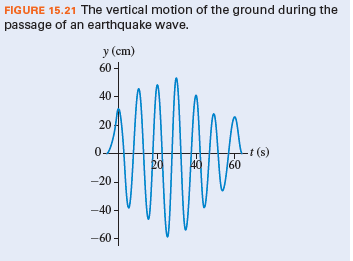FIGURE 15.21 The vertical motion of the ground during the passage of an earthquake wave. y (cm) 60 - 40 - 20 20 40 -t (s) 60 -20 -40 - -60-
Earthquakes are dramatic slips of the earth’s crust. You may feel the waves generated by an earthquake even if you’re some distance from the epicenter, the point where the slippage occurs. Earthquake waves are usually complicated, but some of the longperiod waves shake the ground with motion that is approximately
traveled with a speed of 3500 m/s.
a. Was the wave transverse or longitudinal?
b. What were the wave’s frequency and wavelength?
c. What were the maximum speed and the maximum acceleration of the ground during this earthquake wave?
d. Intense earthquake waves produce accelerations greater than the free-fall acceleration of gravity. How does this wave compare?

Trending now
This is a popular solution!
Step by step
Solved in 6 steps with 3 images
